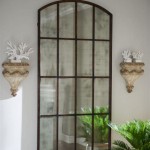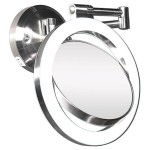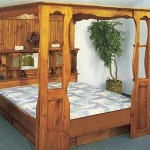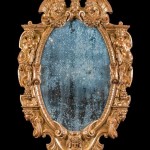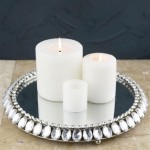Commercial Restroom Mirror Requirements: A Comprehensive Guide
Commercial restrooms must adhere to specific building codes and regulations designed for accessibility, safety, and sanitation. Mirrors are a crucial component of these spaces, and their installation must meet certain requirements. Understanding these guidelines is essential for architects, contractors, and business owners to ensure compliance and create functional, accessible restrooms for all users.
ADA Compliance and Mirror Placement
The Americans with Disabilities Act (ADA) Standards for Accessible Design plays a significant role in dictating mirror requirements in commercial restrooms. These standards ensure individuals with disabilities have equal access to facilities. Key considerations regarding ADA compliance for mirrors include:
- Height: The bottom edge of the reflective surface of a mirror must be no higher than 40 inches above the finished floor.
- Forward Reach: There must be a clear floor space in front of the mirror that allows for forward reach. This space should be at least 30 inches by 48 inches.
- Obstructions: No obstructions, such as paper towel dispensers or other fixtures, should impede access to the mirror within the required forward reach range.
- Lateral Reach: Mirrors should be positioned to allow for side reach for wheelchair users, typically requiring a space of 10 inches on one side and 24 inches on the other.
Mirror Size and Type
While the ADA standards provide minimum requirements, the size and type of mirrors can vary depending on the restroom's overall design and intended use. Factors influencing mirror selection include:
- Restroom Size: Larger restrooms may benefit from larger mirrors or multiple mirrors to accommodate more users simultaneously.
- User Demographics: Consider the anticipated user base. For example, a restroom in a childcare facility may require lower mirrors to accommodate children.
- Aesthetic Considerations: Mirrors can contribute to the overall design aesthetic of the restroom. Frameless mirrors, for example, offer a sleek, modern look.
Materials and Durability
Commercial restroom mirrors are subject to heavy use and potential damage. Therefore, selecting durable and resistant materials is crucial. Key material considerations include:
- Safety Backing: Safety backing is essential to prevent shattering if the mirror is broken. This backing keeps the shards of glass together, reducing the risk of injury.
- Moisture Resistance: Restrooms are humid environments. Mirrors should be moisture-resistant to prevent deterioration and damage caused by humidity.
- Corrosion Resistance: The mirror's frame and mounting hardware should be corrosion-resistant to withstand frequent cleaning and exposure to moisture.
Installation and Mounting
Proper installation is vital for ensuring the longevity and safety of commercial restroom mirrors. Consider the following installation best practices:
- Secure Mounting: Mirrors must be securely mounted to the wall to prevent them from falling or becoming dislodged. Appropriate anchors and fasteners should be used based on the wall type and mirror weight.
- Level Placement: Ensure the mirror is level during installation to avoid a distorted reflection.
- Sealant Application: Applying sealant around the mirror's edges helps prevent moisture from seeping behind the mirror and causing damage.
Lighting and Reflection
Effective lighting is essential for maximizing the functionality of restroom mirrors. Considerations for proper illumination include:
- Light Placement: Position lighting fixtures above or on either side of the mirror to minimize shadows and provide even illumination.
- Light Intensity: Adequate light intensity is necessary for tasks such as applying makeup or shaving.
- Glare Reduction: Avoid using lighting fixtures that create excessive glare, which can be uncomfortable for users.
Maintenance and Cleaning
Regular maintenance and cleaning are necessary to maintain the appearance and functionality of commercial restroom mirrors. Key maintenance considerations include:
- Cleaning Solutions: Use appropriate cleaning solutions specifically designed for mirrors to avoid streaking or damage.
- Cleaning Frequency: Clean mirrors regularly to remove fingerprints, smudges, and other marks.
- Inspection for Damage: Regularly inspect mirrors for any signs of damage, such as cracks or chips, and address them promptly.
Local Codes and Regulations
While ADA standards provide a baseline, it's crucial to consult local building codes and regulations. These local requirements may impose additional stipulations regarding mirror placement, size, or materials.
- Building Permits: Ensure that the restroom design, including mirror installation, complies with local building permit requirements.
- Inspections: Restrooms are typically subject to inspections to ensure compliance with all applicable codes and regulations.
- Accessibility Specialists: Consulting with accessibility specialists can be beneficial in ensuring full compliance with all accessibility requirements.

Small Commercial Bathroom Design Guide 10 Spec

10 Features Your Commercial Bathroom Needs Air Delights Blog

Commercial Restroom Mirrors Aligning Size And Type

Commercial Bathroom Mirror Traditional Vs Low Iron Copper Free

Our Brand New Mirror Box Units Give Your Commercial Washrooms A Stylish Finishing Touch Venesta

Mirror Box Units Venesta Washrooms

Building Code Restroom Requirements Seko Construction

Commercial And Hospitality Spaces Solutions From Stern Innovative Mirror Units Cabinet Wash Stations Engineering Ltd

The Impacts Of Mirror Size Type In Commercial S
Ada Inspections Nationwide Llc Compliancy

